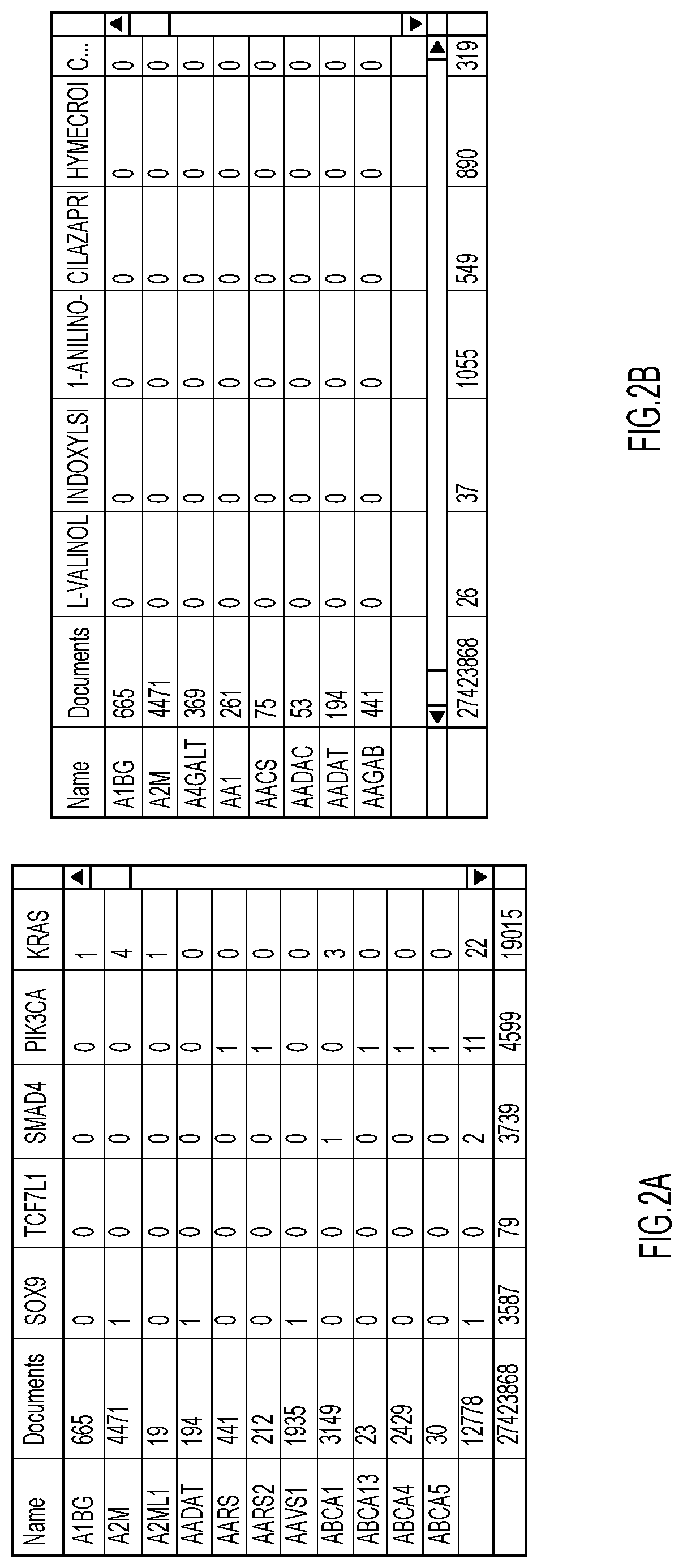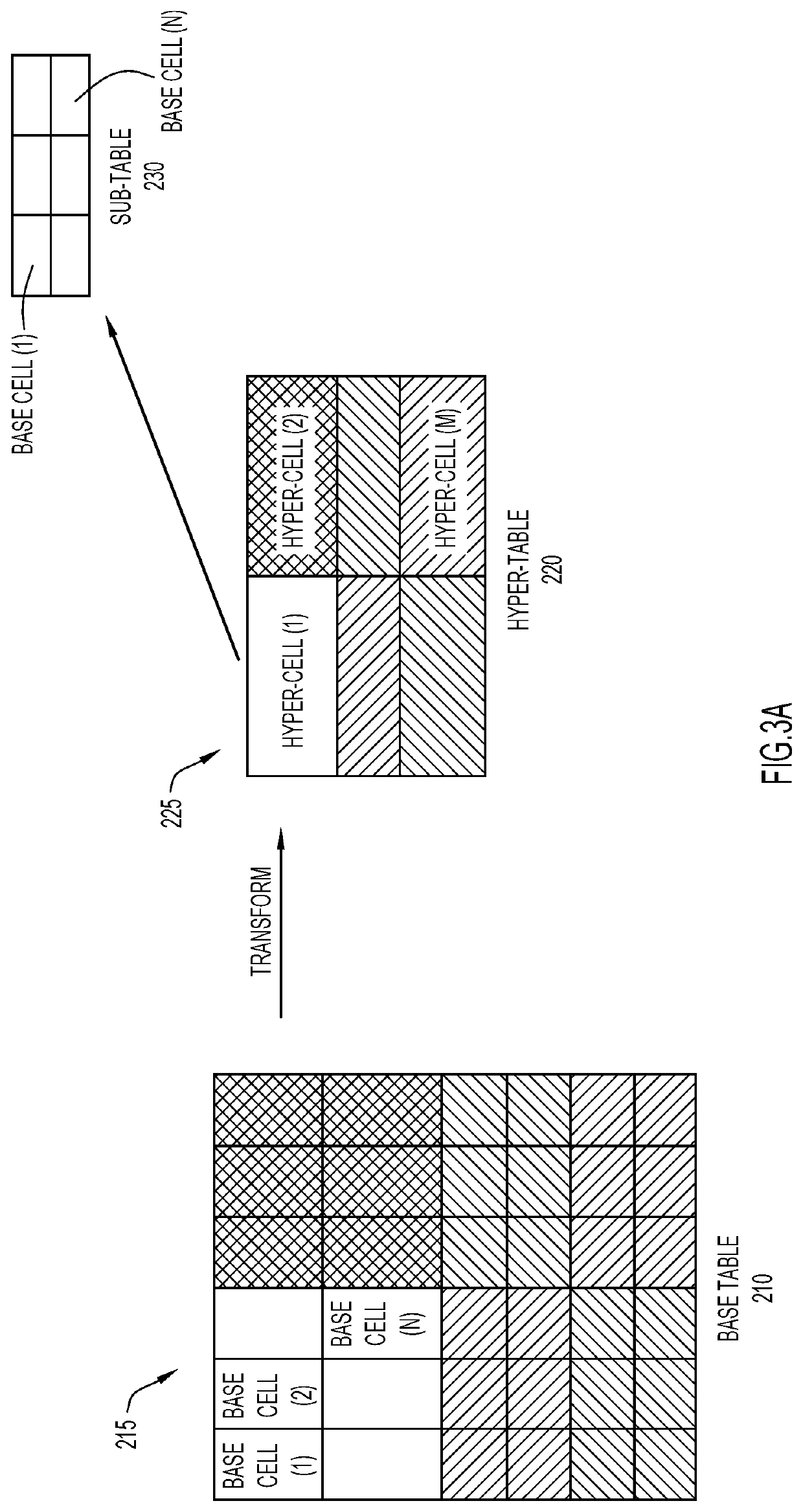Accessing data in a multi-level display for large data sets
a multi-level display and data technology, applied in the field can solve the problems of large data sets, time-consuming and time-consuming processes, and inability to analyze information and present information to users in a way that enables interpretation, so as to facilitate the access of large data sets and facilitate the use of large data sets.
- Summary
- Abstract
- Description
- Claims
- Application Information
AI Technical Summary
Benefits of technology
Problems solved by technology
Method used
Image
Examples
Embodiment Construction
[0035]Accessing data in large data sets is difficult, time-consuming, and error prone. Accordingly, the problem to be solved may be characterized as accessibility and analysis of large sets of data. Thus, the multi-level tables of embodiments of the present invention provide a variety of technical features allowing for representation and characterization of large sets of data in a concise, accessible format.
[0036]Technical features include efficiently accessing specific information in a large data set without traversing through the entire table. The characteristics of the data are summarized at multiple levels (top and intermediate) of the multi-level table. For example, for numerical data, groups of cells (hyper-cells) may represent the summation, average, median or any other suitable parameter which corresponds to the bulk characteristics of the corresponding group of cells. In some aspects, a hyper-cell is a transformation of the underlying data of a group of base cells to genera...
PUM
 Login to View More
Login to View More Abstract
Description
Claims
Application Information
 Login to View More
Login to View More - R&D
- Intellectual Property
- Life Sciences
- Materials
- Tech Scout
- Unparalleled Data Quality
- Higher Quality Content
- 60% Fewer Hallucinations
Browse by: Latest US Patents, China's latest patents, Technical Efficacy Thesaurus, Application Domain, Technology Topic, Popular Technical Reports.
© 2025 PatSnap. All rights reserved.Legal|Privacy policy|Modern Slavery Act Transparency Statement|Sitemap|About US| Contact US: help@patsnap.com



